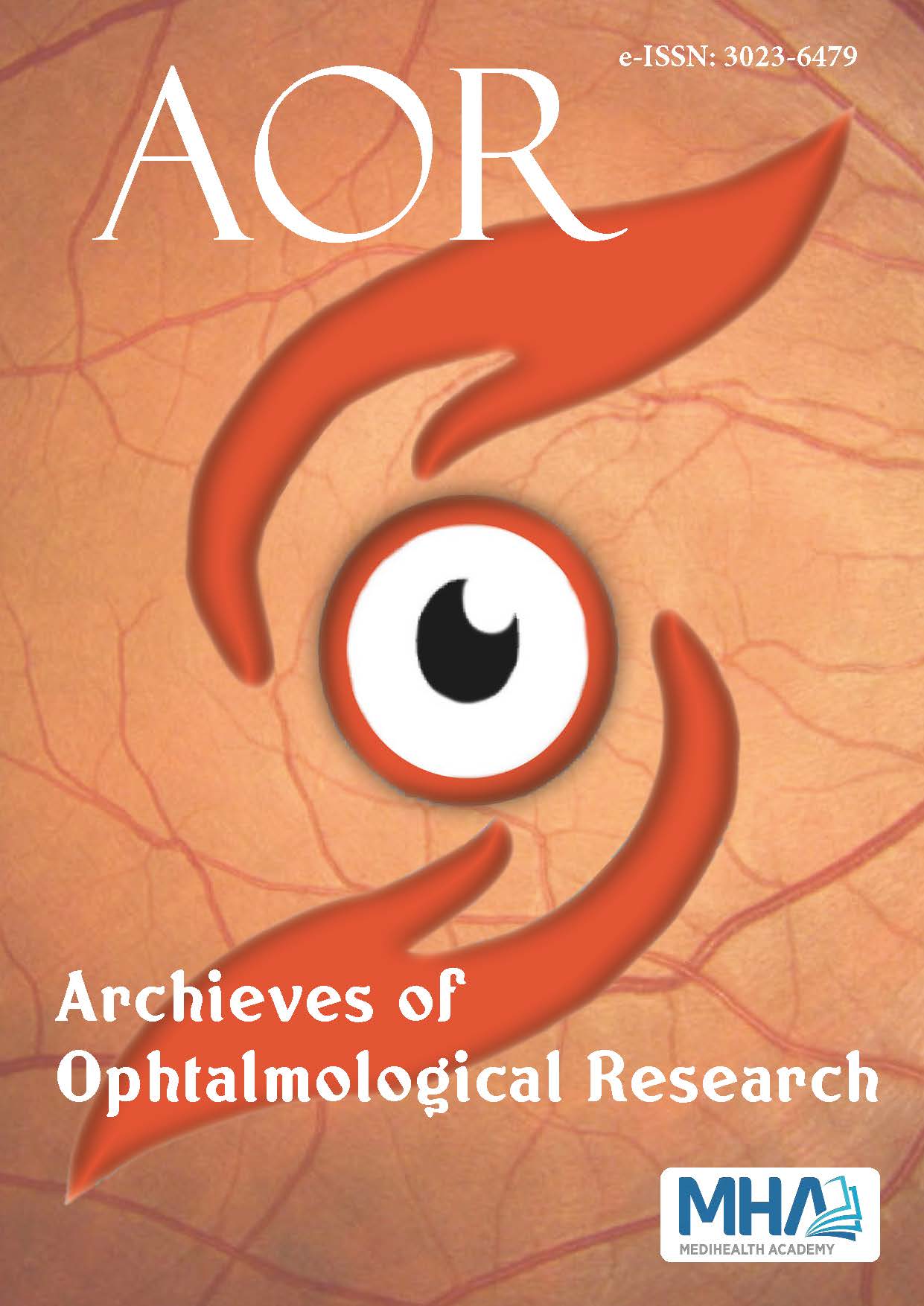1. Scherbel AL, Mackenzie AH, Nousek JE, Atdjian M. Ocular lesions inrheumatoid arthritis and related disorders with particular referenceto retinopathy. A study of 741 patients treated with and withoutchloroquine drugs. N Engl J Med. 1965;273(7):360-366. doi: 10.1056/nejm196508122730704
2. Yates M, Malaiya R, Stack J, Galloway JB. Hydroxychloroquine use:the potential impact of new ocular screening guidelines. Eye (Lond).2018;32(1):161-162. doi: 10.1038/eye.2017.166
3. Alarcón GS, McGwin G, Bertoli AM, et al. Effect of hydroxychloroquineon the survival of patients with systemic lupus erythematosus: datafrom LUMINA, a multiethnic US cohort (LUMINA L). Ann Rheum Dis.2007;66(9):1168-1172. doi: 10.1136/ard.2006.068676
4. Mindell JA. Lysosomal acidification mechanisms. Annu Rev Physiol.2012;74:69-86. doi: 10.1146/annurev-physiol-012110-142317
5. Pham BH, Marmor MF. Sequential changes in hydroxychloroquineretinopathy up to 20 years after stopping the drug: implications formild versus severe toxicity. Retina. 2019;39(3):492-501. doi: 10.1097/IAE.0000000000002408
6. Schroeder RL, Gerber JP. Chloroquine and hydroxychloroquinebinding to melanin: Some possible consequences for pathologies.Toxicol Rep. 2014;1:963-968. doi: 10.1016/j.toxrep.2014.10.019
7. Morsman CD, Livesey SJ, Richards IM, Jessop JD, Mills PV. Screeningfor hydroxychloroquine retinal toxicity: is it necessary? Eye (Lond).1990;4(Pt 4):572-576. doi: 10.1038/eye.1990.79
8. Melles RB, Marmor MF. The risk of toxic retinopathy in patientson long-term hydroxychloroquine therapy. JAMA Ophthalmol.2014;132(12):1453-1460. doi: 10.1001/jamaophthalmol.2014.3459
9. Yusuf IH, Issa PC, Ahn SJ. Hydroxychloroquine-induced retinaltoxicity. Front Pharmacol. 2023;14. doi: 10.3389/FPHAR.2023.1196783
10. Chiu HI, Cheng HC, Wu CC, et al. Exome sequencing and genome-wide association analyses unveils the genetic predisposition inhydroxychloroquine retinopathy. Eye (Lond). doi: 10.1038/s41433-024-03044-x
11. Trefond L, Lhote R, Mathian A, et al. Identification of new risk factorsfor hydroxychloroquine and chloroquine retinopathy in systemic lupuserythematosus patients. Semin Arthritis Rheum. 2024;66:152417. doi:10.1016/j.semarthrit.2024.152417
12. Melles RB, Marmor MF. Pericentral retinopathy and racial differencesin hydroxychloroquine toxicity. Ophthalmology. 2015;122(1):110-116.doi: 10.1016/j.ophtha.2014.07.018
13. Marmor MF. Comparison of screening procedures inhydroxychloroquine toxicity. Arch Ophthalmol. 2012;130(4):461-469.doi: 10.1001/archophthalmol.2011.371
14. Marshall E, Robertson M, Kam S, Penwarden A, Riga P, DaviesN. Prevalence of hydroxychloroquine retinopathy using 2018Royal College of Ophthalmologists diagnostic criteria. Eye (Lond).2021;35(1):343-348. doi: 10.1038/s41433-020-1038-2
15. Anderson C, Blaha GR, Marx JL. Humphrey visual field findings inhydroxychloroquine toxicity. Eye (Lond). 2011;25(12):1535-1545. doi:10.1038/eye.2011.245
16. Pfau M, Jolly JK, Wu Z, et al. Fundus-controlled perimetry(microperimetry): application as outcome measure in clinical trials. ProgRetin Eye Res. 2021;82:100907. doi: 10.1016/j.preteyeres.2020.100907
17. Rohrschneider K, Bültmann S, Springer C. Use of fundus perimetry(microperimetry) to quantify macular sensitivity. Prog Retin Eye Res.2008;27(5):536-548. doi: 10.1016/j.preteyeres.2008.07.003
18. Lai TYY, Ngai JWS, Chan WM, Lam DSC. Visual field andmultifocal electroretinography and their correlations in patients onhydroxychloroquine therapy. Doc Ophthalmol. 2006;112(3):177-187.doi: 10.1007/s10633-006-9006-0
19. Tsang AC, Ahmadi Pirshahid S, Virgili G, Gottlieb CC, Hamilton J,Coupland SG. Hydroxychloroquine and chloroquine retinopathy: asystematic review evaluating the multifocal electroretinogram as ascreening test. Ophthalmology. 2015;122(6):1239-1251.e4. doi: 10.1016/j.ophtha.2015.02.011
20. Omri S, Omri B, Savoldelli M, et al. The outer limiting membrane(OLM) revisited: clinical implications. Clin Ophthalmol. 2010;4:183-195. doi: 10.2147/opth.s5901
21. Chen E, Brown DM, Benz MS, et al. Spectral domain optical coherencetomography as an effective screening test for hydroxychloroquineretinopathy (the "flying saucer" sign). Clin Ophthalmol.2010;4:1151-1158. doi: 10.2147/OPTH.S14257
22. Rodriguez-Padilla JA, Hedges TR, Monson B, et al. High-speedultra-high-resolution optical coherence tomography findings inhydroxychloroquine retinopathy. Arch Ophthalmol. 2007;125(6):775-780. doi: 10.1001/archopht.125.6.775
23. Kellner S, Weinitz S, Farmand G, Kellner U. Cystoid macular oedemaand epiretinal membrane formation during progression of chloroquineretinopathy after drug cessation. Br J Ophthalmol. 2014;98(2):200-206.doi: 10.1136/bjophthalmol-2013-303897
24. Kellner U, Renner AB, Tillack H. Fundus autofluorescence and mfERGfor early detection of retinal alterations in patients using chloroquine/hydroxychloroquine. Invest Ophthalmol Vis Sci. 2006;47(8):3531-3538.doi: 10.1167/iovs.05-1290
25. Cukras C, Huynh N, Vitale S, Wong WT, Ferris FL, Sieving PA.Subjective and objective screening tests for hydroxychloroquinetoxicity.Ophthalmology. 2015;122(2):356-366. doi: 10.1016/j.ophtha.2014.07.056
26. Kim KE, Ahn SJ, Woo SJ, et al. Use of OCT retinal thickness deviationmap for hydroxychloroquine retinopathy screening. Ophthalmology.2021;128(1):110-119. doi: 10.1016/j.ophtha.2020.06.021
27. Gil P, Nunes A, Farinha C, Teixeira D, Pires I, Silva R. Structural andfunctional characterization of the retinal effects of hydroxychloroquinetreatment in healthy eyes. Ophthalmologica. 2019;241(4):226-233. doi:10.1159/000495308
28. Casado A, López-de-Eguileta A, Fonseca S, et al. Outer nuclear layerdamage for detection of early retinal toxicity of hydroxychloroquine.Biomedicines. 2020;8(3). doi: 10.3390/biomedicines8030054
29. Melles RB, Marmor MF. Rapid macular thinning is an early ındicator ofhydroxychloroquine retinal toxicity. Ophthalmology. 2022;129(9):1004-1013. doi: 10.1016/j.ophtha.2022.05.002
30. Ahn SJ, Ryu SJ, Joung JY, Lee BR. Choroidal thinning associated withhydroxychloroquine retinopathy. Am J Ophthalmol. 2017;183:56-64.doi: 10.1016/j.ajo.2017.08.022
31. Polat OA, Okçu M, Yılmaz M. Hydroxychloroquine treatmentalters retinal layers and choroid without apparent toxicity in opticalcoherence tomography. Photodiagnosis Photodyn Ther. 2022;38:102806.doi: 10.1016/j.pdpdt.2022.102806
32. Lee DH, Melles RB, Joe SG, et al. Pericentral hydroxychloroquineretinopathy in Korean patients. Ophthalmology. 2015;122(6):1252-1256.doi: 10.1016/j.ophtha.2015.01.014
33. Leitgeb RA. En face optical coherence tomography: a technology review[Invited]. Biomed Opt Express. 2019;10(5):2177-2201. doi:10.1364/BOE.10.002177
34. Ahn SJ, Joung J, Lee BR. En face optical coherence tomography ımagingof the photoreceptor layers in hydroxychloroquine retinopathy. Am JOphthalmol. 2019;199:71-81. doi: 10.1016/j.ajo.2018.11.003
35. Greenberg JP, Duncker T, Woods RL, Smith RT, Sparrow JR, DeloriFC. Quantitative fundus autofluorescence in healthy eyes. InvestOphthalmol Vis Sci. 2013;54(8):5684-5693. doi: 10.1167/iovs.13-12445
36. Reichel C, Berlin A, Radun V, et al. Quantitative fundusautofluorescence in systemic chloroquine/hydroxychloroquine therapy.Transl Vis Sci Technol. 2020;9(9):42. doi: 10.1167/tvst.9.9.42
37. Greenstein VC, Lima de Carvalho JR, Parmann R, et al. Quantitativefundus autofluorescence in HCQ retinopathy. Invest Ophthalmol VisSci. 2020;61(11):41. doi: 10.1167/iovs.61.11.41
38. Abdolrahimzadeh S, Ciancimino C, Grassi F, Sordi E, Fragiotta S,Scuderi G. Near-infrared reflectance imaging in retinal diseasesaffecting young patients. J Ophthalmol. 2021;2021:5581851. doi:10.1155/2021/5581851
39. Kellner S, Weinitz S, Kellner U. Spectral domain optical coherencetomography detects early stages of chloroquine retinopathy similarto multifocal electroretinography, fundus autofluorescence and near-infrared autofluorescence. Br J Ophthalmol. 2009;93(11):1444-1447. doi:10.1136/bjo.2008.157198
40. Akhlaghi M, Kianersi F, Radmehr H, Dehghani A, Naderi BeniA, Noorshargh P. Evaluation of optical coherence tomographyangiography parameters in patients treated with Hydroxychloroquine.BMC Ophthalmol. 2021;21(1):209. doi: 10.1186/s12886-021-01977-5
41. Esser EL, Zimmermann JA, Storp JJ, Eter N, Mihailovic N. Retinalmicrovascular density analysis in patients with rheumatoid arthritistreated with hydroxychloroquine. Graefes Arch Clin Exp Ophthalmol.2023;261(5):1433-1442. doi: 10.1007/s00417-022-05946-6
42. Marmor MF, Kellner U, Lai TYY, Melles RB, Mieler WF. AmericanAcademy of Ophthalmology. Recommendations on screeningfor chloroquine and hydroxychloroquine retinopathy (2016Revision). Ophthalmology. 2016;123(6):1386-1394. doi: 10.1016/j.ophtha.2016.01.058
43. Yusuf IH, Foot B, Lotery AJ. The Royal College of Ophthalmologistsrecommendations on monitoring for hydroxychloroquine andchloroquine users in the United Kingdom (2020 revision): executivesummary. Eye (Lond). 2021;35(6):1532-1537. doi: 10.1038/s41433-020-01380-2

